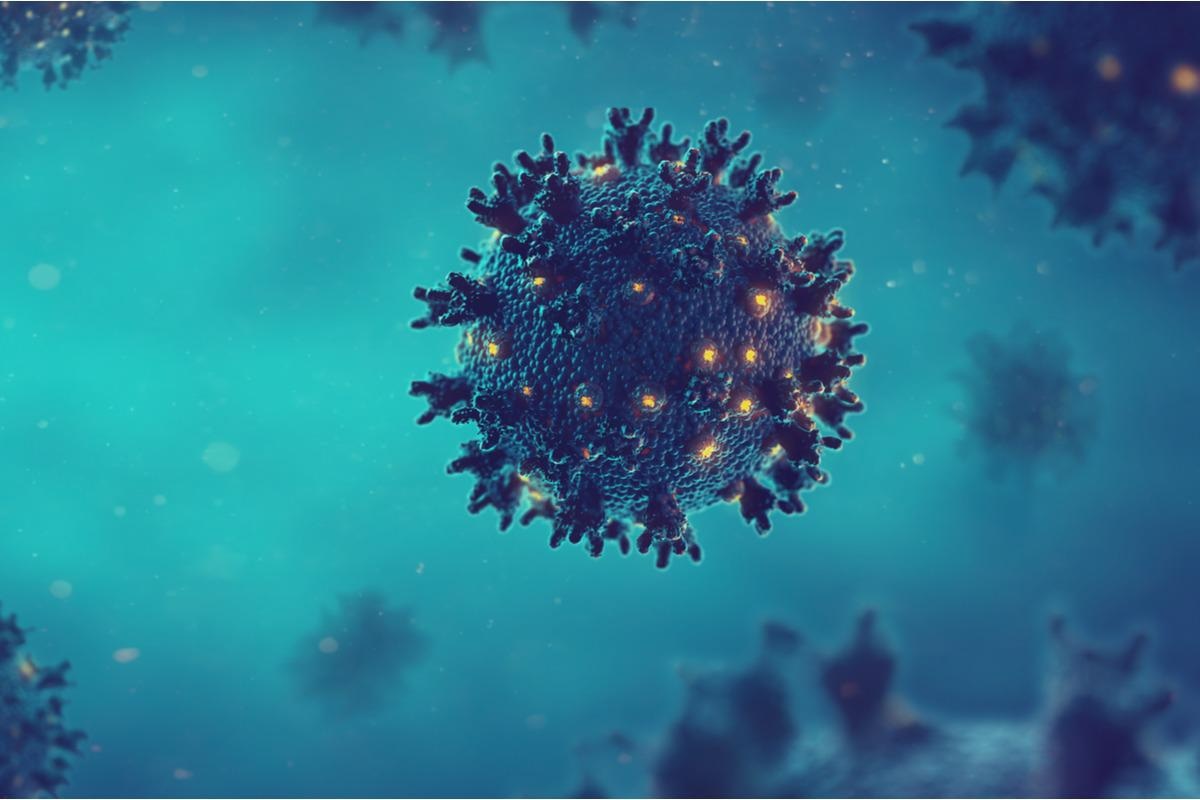In a recent study published in Science Immunology, researchers evaluated the impact of breakthrough infections with severe acute respiratory syndrome coronavirus 2 (SARS-CoV-2) Omicron BA.1 sublineage on SARS-CoV-2 variants of concern (VOCs) neutralization and memory B (BMEM) lymphocytes formation among BNT162b2 vaccinees.
 Study: Omicron BA.1 breakthrough infection drives cross-variant neutralization and memory B cell formation against conserved epitopes. Image Credit: ffikretow/Shutterstock
Study: Omicron BA.1 breakthrough infection drives cross-variant neutralization and memory B cell formation against conserved epitopes. Image Credit: ffikretow/Shutterstock
Background
Durable and broad immune responses are necessary for protection against the existing VOCs and the variants yet to emerge. Titers of neutralizing antibodies and antibodies binding to the SARS-CoV-2 spike (S) protein and its receptor-binding domain (RBD) have been established as correlates of protection against SARS-CoV-2 infections.
Long-lived memory BMEM lymphocytes are essential for the development of recall immune responses on re-encounter with SARS-CoV-2 antigens and for the evolution and maintenance of antibody responses against the VOCs by expanding the variant recognition breadth.
About the study
In the present study, researchers characterized the neutralizing and recall immune responses among messenger ribonucleic acid (mRNA)-based BNT162b2 vaccine recipients with Omicron BA.1 sublineage breakthrough infections against the novel Omicron BA.4/5 and earlier SARS-CoV-2 VOCs.
Sera were obtained from double- or triple BNT162b2-vaccinated individuals who developed Omicron BA.1 breakthrough infections between November 2021 and mid-January 2022. Pseudovirus neutralization tests (pVNT) and live viral neutralization tests (VNT) were performed to assess SARS-CoV-2 entry inhibition and SARS-CoV-2 variants’ neutralization, respectively.
For the pVNT tests, pseudoviruses with the S protein of SARS-CoV-2 strains such as Wuhan-Hu-1, Alpha, Beta, Delta, Omicron BA.1, BA.2, BA.4/5 were used. Flow cytometry-based B lymphocyte phenotyping assays were performed to detect variant-specific S-targeted B lymphocytes from peripheral blood mononuclear cells (PBMCs). Additionally, SARS-CoV-1 assays were performed to evaluate pan-sarbecovirus neutralization potency.
BMEM lymphocytes were stained with fluorescently labeled variant-specific S or RBD to evaluate the antibody response specificity. Multiple sequence alignment was also performed. Further, the combinatorial Boolean gating approach was used to differentiate between BMEM lymphocyte subsets that could recognize variant-specific epitopes and epitopes conserved across the VOCs.
Results
In Omicron infection-naïve doubly vaccinated individuals, the 50% pseudovirus neutralization (pVNT50) geometric mean titers (GMTs) for Delta and Beta were decreased, and that for Omicron BA.1, BA.2, and BA.4/5 were undetectable. The third BNT162b2 vaccine dose significantly boosted the pVNT50 GMTs for Alpha (B.1.1.7), Beta (B.1.351), and Delta (B.1.617.2); however, GMTs of 160, 211, and 74 were obtained for Omicron BA.1, BA.2 and BA.4/5 sublineages, respectively, which were substantially lower those for the Wuhan-Hu-1 strain (GMT 398).
Compared to the pVNT50 GMTs for BA.1, BA.2, and BA.4/5 among Omicron-naïve doubly vaccinated individuals, the corresponding GMTs among doubly vaccinated Omicron BA.1 convalescents were 100-times, 35-times, and 15-times greater, respectively. The GMTs among Omicron BA.1 convalescents were higher than the Omicron-naïve triple-vaccinated participants.
Triple-vaccinated BA.1 convalescents demonstrated high pVNT50 GMTs of 1182, 1029, and 836 for Beta, Omicron BA.1, and Omicron BA.2, respectively, which were comparable to those of the Wuhan-Hu-1 strain (GMT 1182). However, Omicron BA.4/5 neutralization titers (GMT 197) increased only moderately and were more comparable with SARS-CoV-1 titers than the Wuhan-Hu-1 strain titers.
Live SARS-CoV-2 neutralization assays showed that the neutralizing GMTs against Omicron BA.1, the Wuhan-Hu-1 strain, and all VOCs were comparable among Omicron BA.1 convalescents, indicating strong cross-neutralization, but with substantially reduced potency against Omicron BA.4/5. Further, the B lymphocyte phenotyping assays showed that all S- and RBD-targeted B lymphocytes in the peripheral blood samples belonged to the BMEM phenotype [cluster of differentiation (CD)20highCD38int/neg].
The frequency of BMEM lymphocytes among Omicron-naïve doubly vaccinated individuals increased gradually after vaccination. In comparison to three weeks after double BNT162b2 vaccination, at five months, S-and RBD-targeted BMEM lymphocytes against all VOCs increased by four-fold and three-fold, respectively.
Most BMEM lymphocytes from Omicron-naïve double vaccinated individuals and even more from triple-vaccinated individuals were directed against epitopes shared by the Wuhan-Hu-1 and the Omicron BA.1 strains. Vaccinated individuals with Omicron BA.1 breakthrough infections demonstrated an expanded and broad BMEM lymphocyte repertoire against conserved S and RBD epitopes rather than Omicron BA.1-specific BMEM lymphocytes.
Multiple sequence alignment revealed that the Omicron BA.1 RBD is divergent from the conserved RBD sequence sites across the Wuhan-Hu-1, Alpha, and Delta strains by 13 mutations. Accordingly, the most prominent BMEM lymphocyte population detected among BA.1 convalescents recognized Wuhan-Hu-1, Alpha, and Delta RBDs, but not Omicron BA.1 RBD.
The BMEM lymphocyte recall responses against RBD were driven by specificities induced by prior BNT162b2 vaccinations and not significantly redirected against novel RBD epitopes exhibited by Omicron BA.1. The L452R mutation was identified to be unique to Delta and Omicron BA.4/5, and the unique mutation in Wuhan-Hu-1 and Alpha was T478K. The L452R and T478K mutations conferred immune-evasive properties to the corresponding variants.
Conclusion
Overall, the study findings showed that breakthrough infections with Omicron BA.1 resulted in robust neutralizing titers for Omicron BA.1, BA.2, and earlier SARS-CoV-2 VOCs, but not for Omicron BA.4/5 among BNT162b2 vaccinees. Further, strong memory/recall responses were elicited by Omicron BA.1 convalescents with the expansion of BMEM lymphocytes against SARS-CoV-2 epitopes conserved across VOCs instead of the induction of Omicron BA.1-specific B lymphocytes.